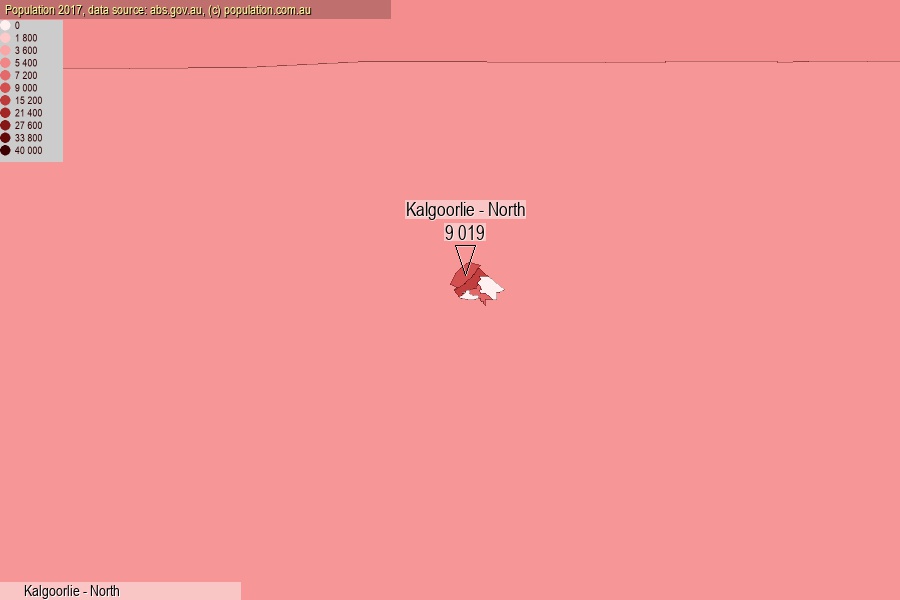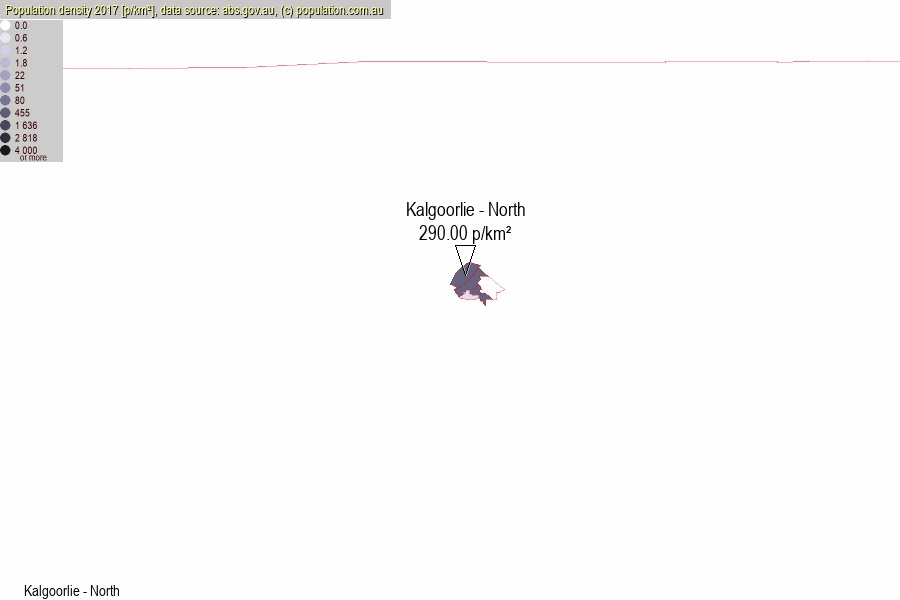 population.com.au
population.com.auLast official estimated population of Kalgoorlie - North (as Statistical Area Level 2) was 9 019 people (on 2017-06-30)[2]. This was 0.04% of total Australian population and 0.348% of WA population. Area of Kalgoorlie - North is 31.10 km², in this year population density was 290.00 p/km² . If population growth rate would be same as in period 2016-2017 (-0.21%/yr), Kalgoorlie - North population in 2025 would be 8 868. [0]



Click to enlarge. Kalgoorlie - North is located in the center of the images.
Population [people], population density [p./km²] and population change [%/year] [2]
View borders » (new window) [4]
[2001-2002] +0.68 %/Yr.
[2002-2003] +0.63 %/Yr.
[2003-2004] -0.12 %/Yr.
[2004-2005] -0.15 %/Yr.
[2005-2006] +0.82 %/Yr.
[2006-2007] -0.01 %/Yr.
[2007-2008] +1.76 %/Yr.
[2008-2009] +1.91 %/Yr.
[2009-2010] +1.26 %/Yr.
[2010-2011] +1.47 %/Yr.
[2011-2012] +1.28 %/Yr.
[2012-2013] +0.76 %/Yr.
[2013-2014] -1.74 %/Yr.
[2014-2015] -1.96 %/Yr.
[2015-2016] -2.64 %/Yr.
[2016-2017] -0.21 %/Yr.
[0] Calculated with linear interpolation from officially estimated population
[1] Read more about SA2 and Australian Statistical Geography Standard (ASGS) on abs.gov.au
[2] Population data from Australian Bureau of Statistics (Population and density: 2017; change: 2016-2017)
[3] Digital Boundaries: Australian Statistical Geography Standard (ASGS) 2016.
[4] Border coordinates are simplifyed using Ramer-Douglas-Peucker algorithm.